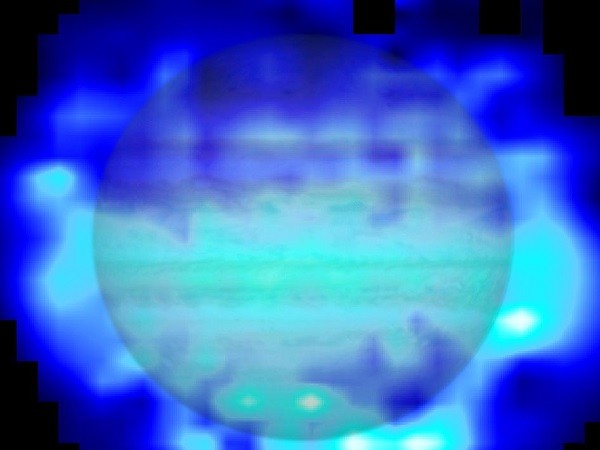
Scientists have found the origin of the mysterious traces of water in Jupiter's upper atmosphere - comet impact.
In July 1994, the comet Shoemaker-Levy 9 (SL9) hit Jupiter, the largest planet of the solar system, causing a major impact on the planet. SL9 was the first comet observed orbiting a planet rather than the sun. Astronomers worldwide witnessed the space event when the comet, which is composed of 21 fragments, hit Jupiter leaving visible scars in the planet's atmosphere that persisted for years.
It was the first direct observation of a celestial event collision in the solar system, which was followed by astronomers with ground-based telescopes and the NASA/ESA Hubble Space Telescope.
ESA's Infrared Space Observatory, which was launched in 1995, was the first to identify the presence of water in Jupiter's upper atmosphere. For almost two decades scientists have debated about the origins of water in the planet's upper atmosphere.
Jupiter has water in its lower layers of atmosphere and its source could be explained as internal. But the presence of molecules in the upper atmospheric layers, where there is oxygen scarcity, has puzzled scientists for many years. It was speculated that comet SL9 could have been the origin of the water but there was no direct proof to confirm it.
Now, scientists have found conclusive evidence that it was the comet - Shoemaker-Levy 9 - that delivered the water to Jupiter's upper atmosphere. New data obtained from the Herschel space observatory, an European Space Agency mission, revealed at least 2-3 times more water in the planet's southern hemisphere where the impact occurred, than in the north. Most of it was found concentrated at the site of the impact and only in high altitudes.
Data from the Herschel's Photodetecting Array Camera and Spectrometer (PACS), with the help of NASA's Infrared Telescope Facility showed an asymmetry in the distribution of water in its upper atmosphere caused by the comet impact. "The asymmetry between the two hemispheres suggests that water was delivered during a single event and rules out icy rings or moons as candidate sources," Thibault Cavalié, from the Laboratoire d'Astrophysique de Bordeaux, France, who led the study, said in a statement.
Based on their models, scientists revealed that as much as 95 percent of water in the atmosphere is due to the comet impact, a news release from ESA reported.
















